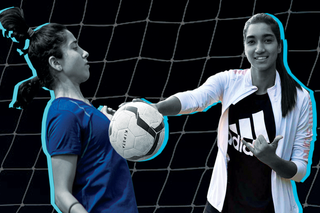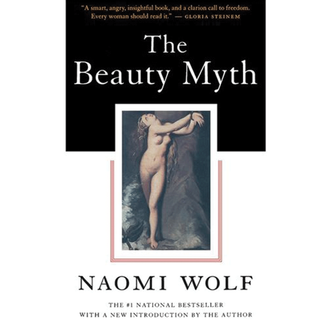
Indian Women’s Football Surges Ahead Without Resources, All Thanks To Its Players
“If people would actually support us, can you imagine where women’s football would reach?”

What do you do when you want to play football in a state that has no women’s team, no infrastructure in place for female footballers, and most importantly, no potential team-mates? You go knocking on doors, convince girls to come play, assure their families their daughters will be safe, and temporarily step in as a coach with dreams of one day playing for the Indian national team — at 17. That’s how Afshan Ashiq, now captain of Jammu and Kashmir’s first ever woman’s football team, began her footballing career. Her parents had asked her then, “Why are you taking that initiative? Why not someone else?” she recounted, adding in her response: “Why should I wait for someone else?”
Ashiq is one of many Indian footballers currently trying to make a career in the sport, battling societal stigma and a severe lack of institutional investment in Indian women’s football. Her paving the way for younger footballers is a common theme that runs across the work of female athletes in India — where governmental and corporate backing falls short, these women pick up the slack, despite being painfully aware of the odds they themselves are up against.
“It was not easy for me to convince everyone, especially my own family. They were concerned, asked ‘You’re a girl; football is a contact sport; what will happen to you’?” Ashiq said. “Girls are not bold enough to speak up about what they actually want. It takes time to change the perception of people. They don’t understand what we are doing. They know you’re a girl, you have to finish your studies, maybe get a job, then get married. But a girl can do much more. She just needs a push.”
That’s what Ashiq set out to do, eventually forming her own club in Jammu and Kashmir, where she trained close to 150 young footballers. “When I saw their faces, I wanted to tell them – You are not weak. You can do whatever you want. Your parents are important in life, but you should do what makes you happy. I want that for my girls.”
But it’s not easy. As a young player, Monika Bisht had realized there were no coaches available to teach young girls. She decided to change career paths, and started studying to fill that gap. Now affiliated with Bhaichung Bhutia Football Schools, as well as the New Delhi municipal council, she teaches girls as young as 10 and under to play the sport.
“For the age I start coaching, there is a huge obstacle from parents. They don’t allow their girls to play football. I tell them their girls will be fit, they will be safe; with sport, they will learn communication and team-building. They will become good human beings,” she said. “I have to do this every cycle. With boys, there are no such obstacles. Boys are self-motivated; they play with friends; they watch and know a lot about football. We need to inculcate that same positivity and desire in girls also.”
As a female coach, the burden of changing perceptions about women’s athletic abilities has also fallen on her. “Everywhere I’m going, I have to fight for my right to be there; I have to work extra. If some boys are giving 100%, then I have to give 120%. They’re not ashamed to say — oh, she is a girl, what does she know?”
In order to increase the low rate of participation of girls from the ground up, Bisht suggests schools should hire coaches and build infrastructure for girls, as young as 8, and make the training free. Sport academies exist, but parents often don’t send their daughters there, and the cost of attending also deters the decision, she added. “I now have the privilege to work with girls’ teams. I’m not leaving them behind.”
For Juhi Shah, who manages a women’s football team, Bodyline FC, a similar motivation appears, mainly out of her own experiences as a player in college, when she realized there simply weren’t enough games available for women to play that would satisfy an athlete. There were few tournaments, and even fewer training grounds, preferences for which were given to boys’ teams. “Today, I tell [the footballers I manage], you want to play? I’ll give you a platform. If you want a ground, I’ll book you one. Maybe one of them can play for India one day.” As for Shah, she took a different career path, and is now a football administrator. Plans to officiate for FIFA are on hold for now, but Shah believes she can further female representation in the sport as long as young footballers can see a woman in an officiating position.
Related on The Swaddle:
Nike, Women’s Football Needs More Than An Aspirational World Cup Ad
In amateur leagues, especially, problems for basic resources arise frequently. Live telecasting a game isn’t possible because women’s leagues don’t have the manpower, or equipment, or even the space by the side of the field to mount a camera, said Sahiba Sawhney, general manager at Roots Premier League, an amateur football organization. Competition to book football grounds is tough, so is finding women who can take three days per week to train and play as amateur footballers. “Why do you play football? What if you get injured? What if you get a scar? Who will marry you? What if you will break a bone? Who will run the house after you break a leg? It gets more and more complicated,” Sawhney said. “At an amateur level, families can’t understand why you have to spend money to do something. ‘Why are you paying to play, when it should be the other way around?’” is a common perception, she said. For now, Roots has two women’s football leagues in Juhu and Bandra, for whom they seek owners who can provide for their football gear and other costs. The idea is to make women’s football as lengthy and sponsor-filled as the men’s, but another major impediment is a lack of brands backing women’s football.
For now, those with a passion to further women’s sports in India are taking up the challenge. “We want to push women’s football players to be as bankable as the men, make [sponsors] see the vision for women’s sport and elevate them to a new level,” said Claire Marrinan, who owns a team in Roots, called the Butterfly Squad. “Women [players] themselves don’t need to work toward it. It’s about a change in mentality and sentiment.” A major impediment to brand involvement in women’s football is not patriarchal perceptions of athletic women, but a commercial concern of how visible their brand would be, Marrinan said, adding that she’s currently looking for corporate sponsors for her team. Last year, Marrinan and co-owner, Ruchika Bhojwani, got a tea company to sponsor the team, as the corporation was looking to add socially conscious messaging to their PR, she said. While Marrinan doesn’t want corporations to be interested in women’s football as some kind of social charity, she believes initial involvement might stem out of such motivations, and be a stepping stone to increase the commercial viability of women’s football.
“It’s very rarely an ideological thing; it all comes down to cost. It’s not to discount the women at all, but everything comes to the cost. It’s my job to make that financially viable to find solutions to that,” Marrinan said.
In the meantime, a dearth of money in women’s football leads us to the most pressing problem yet: the gender pay gap. It not only deters future female footballers from looking at the sport as a valid career choice, it also restricts existing players from focusing on their footballing career exclusively. Currently, the U.S. Women’s National Team is in the middle of a legal battle with the U.S. Soccer Federation for equal pay, a war they have been waging for years without any results. The top division women’s football league in India, the Indian Women’s League or the IWL, on the other hand, did not pay its professional football players at all, let alone equal to men. This year, some teams have started paying a small stipend, according to athletes in the know.
Related on The Swaddle:
All The Arguments You Need: To Convince People Who Think The Gender Pay Gap Isn’t A Thing
For most female footballers, making it pro doesn’t necessarily mean monetary benefits. Tanvie Hans, a player for the IWL’s Bangalore United FC, has been playing the sport for 20 years — first for Tottenham Spurs FC and Fulham FC in England, and now for the IWL. Even in the U.K, which has relatively better infrastructure for women’s football than India does, Hans recalls every single one of her teammates having a 9-5 job on the side. “The sport right now in our country, and back then in the U.K. was based purely on passion. People had to have a job on the side. We stuck to football because we loved the game,” but there was no salary, she said.
In India, Hans has several other projects she earns from, which accompany her career as a professional football player, such as speaking engagements at universities and a brand partnership with Nike. She is also in dialogue with the Karnataka State Football Association to design a girls-only football academy that will be operational throughout the year. As of now, there are no institutions that offer training to female footballers all throughout the year. The norm today is to begin training a couple of weeks before tournaments, which prevents athletes from staying in form during the rest of the year. “Regardless of whether a competition is coming up, I’d need to train to maintain my physical ability and skill. It would be so much easier if this happened naturally, but [as female footballers] we have to do it consciously, go to a nearby park and do a little bit every day.” As for the IWL, Hans believes small updates to the structure can do a great deal for the players involved, such as increasing the length of the league, which runs for a mere month, as opposed to the Indian Super League for men that runs for six to eight months every year.
To battle the stigma surrounding football, Hans is also training women 35 and older, not only to inculcate in them the confidence playing sports can bring, but also to open their minds to the possibility of their children pursuing a career in football. Hans believes this is the right time for any young footballer growing up to pursue football as a career. “All of us who didn’t have the benefits when we started, are hoping to make the change for you. So try and take advantage, just remember why you play the sport, stick to it and make sure you enjoy it.” For anybody who believes women’s football is not as entertaining, or gripping, Hans has a message: “Go and watch the finals of the IWL, or turn on the television and watch the Women’s World Cup right now.
“A player can only perform if they are given regular support. We are not given it and we are still able to produce good performances regardless,” Hans said. “If people would actually support us, can you imagine where women’s football would reach?”
Rajvi Desai is The Swaddle's Culture Editor. After graduating from NYU as a Journalism and Politics major, she covered breaking news and politics in New York City, and dabbled in design and entertainment journalism. Back in the homeland, she's interested in tackling beauty, sports, politics and human rights in her gender-focused writing, while also co-managing The Swaddle Team's podcast, Respectfully Disagree.
Related


Revisiting ‘The Beauty Myth’: What Are the Ethics of Applying Bad Facts to a Good Cause?
